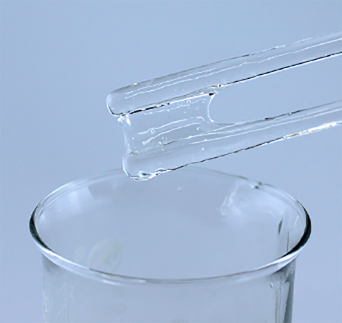
Jul . 27, 2024 11:02 Back to list
Top Hydroxypropyl Methyl Cellulose Manufacturers for Quality and Reliable Supply Solutions
Hydroxypropyl Methyl Cellulose An Overview of Its Manufacturing and Applications
Hydroxypropyl methyl cellulose (HPMC) is a versatile, non-ionic cellulose ether that has gained popularity across various industries, including pharmaceuticals, food, cosmetics, and construction materials. Its unique properties, such as thickening, film-forming, and water retention, make it an essential ingredient in many formulations. This article explores the manufacturing process of HPMC, its applications, and the significance of choosing a reputable manufacturer.
Manufacturing Process
The production of hydroxypropyl methyl cellulose involves a series of chemical processes that modify natural cellulose, usually sourced from wood pulp or cotton. The primary steps include
1. Cellulose Extraction The first step in HPMC manufacturing is the extraction of cellulose from natural sources. This cellulose is then purified to remove any impurities that could affect the final product's quality.
2. Alkali Treatment The purified cellulose is treated with an alkali solution (often sodium hydroxide) to create alkali cellulose. This treatment enables the cellulose fibers to swell and facilitates the subsequent chemical modifications.
3. Esterification The alkali cellulose is then subjected to a reaction with methyl chloride and propylene oxide. This process introduces hydroxypropyl and methyl groups to the cellulose structure, resulting in hydroxypropyl methyl cellulose. The ratio of the two groups can be adjusted to achieve the desired properties of HPMC.
4. Drying and Milling Once the esterification process is complete, the resulting product is washed and neutralized, followed by drying to remove any residual moisture. The final product is then milled into a fine powder, ready for packaging and distribution.
Throughout the manufacturing process, quality control measures are essential to ensure that the HPMC produced meets specific industry standards. Manufacturers often employ advanced technology and equipment to monitor and control the production parameters, leading to a consistent and high-quality product.
Applications of HPMC
hydroxypropyl methyl cellulose manufacturer

The versatility of HPMC allows it to be utilized in a wide range of applications
1. Pharmaceuticals In the pharmaceutical industry, HPMC acts as a binder and film-coating agent in tablets and capsules. Its ability to control the release of active ingredients makes it an invaluable component in controlled-release formulations.
2. Food Industry HPMC is commonly used as a food additive, serving as a thickener, stabilizer, and emulsifier. It is found in processed foods, sauces, and dressings, providing a desirable texture and consistency.
3. Cosmetics and Personal Care In cosmetics, HPMC is used as a thickening agent and stabilizer in creams, lotions, and gels. Its film-forming properties contribute to the texture and functionality of various personal care products.
4. Construction The construction industry utilizes HPMC as a water-retaining agent in cement and mortar formulations, improving workability and extending the open time of the mixtures.
Choosing a Manufacturer
Selecting a reliable HPMC manufacturer is crucial for sourcing high-quality products. Reputable manufacturers often possess certifications such as ISO 9001, ensuring they adhere to strict quality management standards. Furthermore, they should provide comprehensive technical support and documentation, including safety data sheets and product specifications.
When evaluating potential manufacturers, it is essential to consider their experience in the industry, the variety of HPMC grades they offer, and their ability to meet specific customer requirements. A well-established manufacturer will have a track record of delivering consistent products and maintaining strong relationships with their clients.
Conclusion
Hydroxypropyl methyl cellulose is a highly versatile compound with significant applications across various industries. Its unique properties make it a valuable ingredient in pharmaceuticals, food, cosmetics, and construction materials. Understanding the manufacturing process and the importance of selecting a reputable manufacturer is key to ensuring the quality and efficacy of HPMC in any formulation. Whether you are a pharmaceutical company looking for excipients or a food manufacturer seeking texture improvement, HPMC undoubtedly plays a vital role in enhancing product performance and consumer satisfaction.
-
Unlocking the Benefits of HPMC Products: A Gateway to Versatile Applications
NewsAug.07,2025
-
Unleashing the Potential of HPMC Ashland: A Comprehensive Look
NewsAug.07,2025
-
Tile Bonding Cellulose: The Key to Superior Adhesion and Durability
NewsAug.07,2025
-
Hydroxypropyl Methylcellulose Powder: The Versatile Component in Modern Pharmaceuticals
NewsAug.07,2025
-
Hydroxyethyl Cellulose: The Versatile Solution for Various Industries
NewsAug.07,2025
-
Hydroxyethyl Cellulose (HEC): The Versatile Polymer for Various Applications
NewsAug.07,2025







